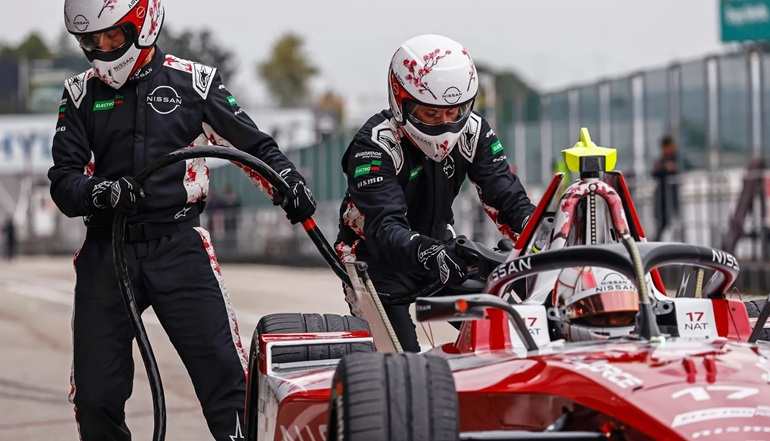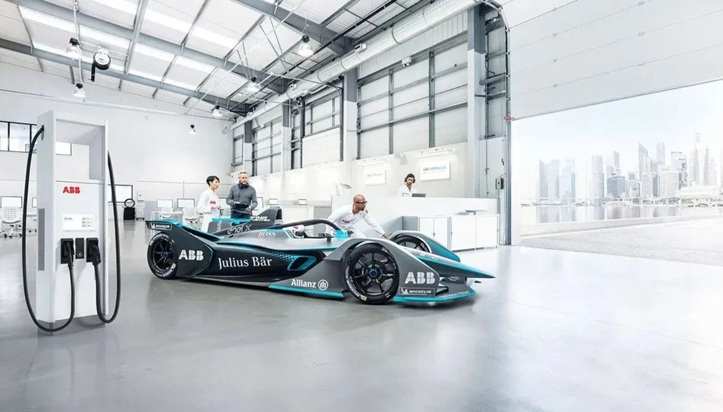Formula E Introduces Mid-Race Charging: A Game-Changer for Electric Racing
After years of anticipation, Formula E is set to unveil its groundbreaking mid-race charging system, a feature that could revolutionize electric racing and influence the future of electric vehicles (EVs). With its debut scheduled for the Jeddah E-Prix on February 14-15, this innovation promises to add excitement to the racing world while showcasing cutting-edge EV technology.

The Evolution of Mid-Race Charging in Formula E
The concept of mid-race charging has been years in the making. Unlike gas-powered racing, where some series like the World Endurance Championship include mid-race refueling, Formula E has struggled with the logistics of implementing a similar system for EVs.
When Formula E first launched in 2014, drivers relied on two cars per race, swapping to a fresh car with a fully charged battery mid-race. While this system worked initially, it wasn’t ideal for temporary race circuits set up in city centers—where Formula E races typically take place.
In 2018, Formula E introduced the “Gen 2” car, which featured a larger battery capable of completing an entire race without a mid-race swap. By 2022, the “Gen 3” car pushed boundaries further with enhanced regenerative braking, boasting a staggering 600kW of braking power. The addition of “Attack Mode,” a feature allowing drivers to unlock extra power for short bursts, added an exciting layer of strategy to the races.
Still, the idea of mid-race charging lingered. The 600kW charging capability of the Gen 3 cars made it feasible, and Formula E began developing a system for it. Initial plans targeted a 2023 launch, but challenges related to safety and setting up temporary charging facilities delayed its rollout. After rigorous testing during the off-season, the series is now confident that the system is ready to shine.
Introducing “Pit Boost”
Formula E’s mid-race charging system, branded as “Pit Boost,” is designed to be both quick and strategic. The system involves a mandatory 34-second pit stop that provides an additional 10% charge (around 4kWh) to each car. While 10% might not sound like much, consider this: the Hyundai Ioniq 5, one of the fastest-charging EVs available, takes 2.5 minutes to add the same charge. Formula E’s system accomplishes it five times faster.
The implications for racing strategy are significant. Drivers who take the Pit Boost early may gain a competitive edge by reducing the need for energy-saving later in the race. However, the trade-off is surrendering track position, which could be difficult to regain, especially if the stop is poorly timed.
This strategic element adds a new layer of excitement for both drivers and spectators. Watching how teams adapt to this feature and the tactics they employ will be fascinating.

Why Mid-Race Charging Matters Beyond Racing
Formula E has always been about more than just racing—it’s a testbed for EV technology that could eventually trickle down to everyday vehicles. The introduction of mid-race charging demonstrates the potential for ultra-fast charging systems, which could drastically reduce EV charging times in the real world.
Imagine stopping for a quick coffee break and charging your car in a fraction of the time it currently takes. If Formula E can prove that ultra-fast charging is safe and reliable under the intense conditions of a race, it could accelerate the development of similar technologies for consumer EVs.
The Jeddah E-Prix: What to Expect
The Jeddah E-Prix will be a doubleheader event, with two night races taking place on February 14 and 15. The races will kick off at 5 PM UTC, 9 AM PST, 12 PM EST, and 8 PM local time in Saudi Arabia.
This marks a historic moment for Formula E, as fans worldwide will witness mid-race charging in action for the first time. Whether you’re a racing enthusiast or simply intrigued by EV innovation, the Jeddah E-Prix promises to be a thrilling showcase of speed, strategy, and cutting-edge technology.
If you’re eager to tune in, Formula E’s website offers a “Ways to Watch” section to help you find the best viewing option in your region. For viewers in the US, Roku is likely the most reliable platform.
Formula E’s introduction of mid-race charging is a milestone for electric racing and a glimpse into the future of EV technology. By pushing the boundaries of what’s possible, the series continues to prove that electric vehicles can deliver both high performance and innovation.
For those of us in the 35 to 50 age group, this development is particularly exciting. It demonstrates how far EVs have come and offers a taste of what’s to come—not just on the racetrack but also on the roads we drive every day.
So, whether you’re a fan of motorsports, a tech enthusiast, or simply someone curious about the evolution of electric vehicles, don’t miss the Jeddah E-Prix. It’s not just a race; it’s a bold step toward a more electrifying future.
Related Post
